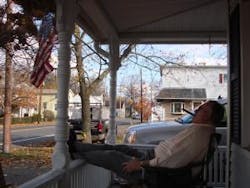Fire Station Design: Funding Considerations for New Stations
Feb. 25, 2010
4 min read
In the never-changing environment of tight restrictions on spending, a department might consider proposing a public relations campaign and launching it, with approval from the appropriate authorities, before going public with a formal proposal for major changes such as extensive renovations or a new station. The purpose is to communicate the reasons why more facilities and possibly additional staff are needed before submitting the request for the necessary budget.
The community relations effort should address all the factors that influence the reaction of the community to the request: (1) the professionalism exhibited by the fire department, (2) the ISO rating of the present fire station (see the end of this chapter for a discussion of ISO ratings), (3) the proposed location of a new station, (4) the procedure for presenting proposals, and (5) the amount of money involved.
It is critical to make your case to the public. They are the ones who will be footing the bill for whatever your department seeks to do. Far too many fire departments fail to reach out to the public for their support. These departments frequently pay a penalty of some sort for their failure to trust the public. The key is to reach out to the community for support. The fire department must come out from behind the walls of their station to share their needs with the community.
Buckman (2006) suggests that there are a number of emerging trends which need to be considered when beginning to design and build a new fire station. The potential impact of each must be weighed in order to reach a proper conclusion regarding the construction of a new station in any community. They are:
1. An increased role in overall disaster response should be considered.
2. Training space and facilities should be considered for integration into the new station.
3. Automatic sprinkler protection must be considered as a means for protecting the community's investment in a new fire station.
4. The built-in environment for those people who will be stationed in the new facility.
5. Security issues must be considered in light of the increased threats to public sector infrastructure elements.
6. Drive through bays should be considered for the improved safety that they bring to a fire department's operations.
7. The need for an increased administrative control area for the location of computers, meeting space, and records storage facilities for older paper records.
8. The difficulty in identifying and acquiring a plot of land suitable for the construction of a station.
In far too many cases fire departments are made to accept a sub-standard station. This usually occurs because a political entity enters into the situation and demands things that bear no relation to reality. In many cases unqualified people design stations. The results are no too pleasing.
This may be done in a misguided attempt to save money on the project. Just because you have a municipal engineer that does not mean that such a professional is qualified to design an emergency response station. This is an extremely expensive undertaking, one that a department will have to live with for at least 50 years. Money saved on the front end can end up costing a great deal for future generations.
The fire department needs to work to insure that an architect familiar the design of emergency response facilities is retained for the job of designing the station. I have seen far too many stations that were designed by people who might well have been qualified to design gas stations and one-family homes, however they had no idea how to design a fire station, and did not bother to ask the fire department what they wanted and needed. Be very careful in the selection of design talent.
I would suggest that each of these issues merits your consideration if you intend to gain the necessary public support to build a new fire station in your community. You ignore the public at your own peril.
About the Author

Dr. Harry Carter
HARRY R. CARTER, Ph.D., who is a Firehouse contributing editor, is a fire protection consultant based in Adelphia, NJ. He is chairman of the Board of Commissioners in Howell Township Fire District 2 and retired from the Newark, NJ, Fire Department as a battalion commander. Carter has been a member of the Adelphia Fire Company since 1971, serving as chief in 1991. He is a life member and past president of the International Society of Fire Service Instructors and life member of the NFPA. He is the immediate past president of the U.S. branch of the Institution of Fire Engineers (IFE) of Great Britain. Carter holds a Ph.D. in organization and management from Capella University in Minneapolis, MN.
Connect with Harry:
Email: [email protected]
Sign up for our eNewsletters
Get the latest news and updates
